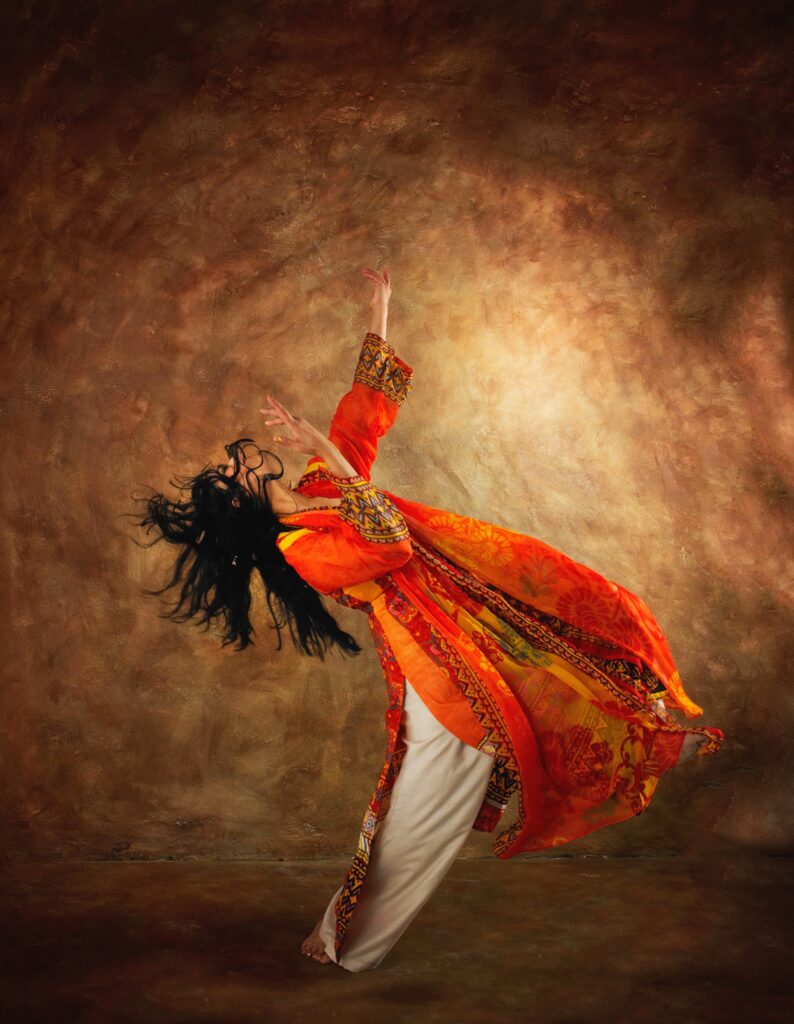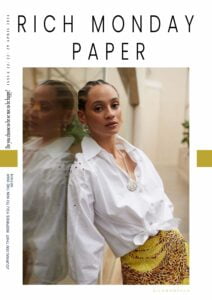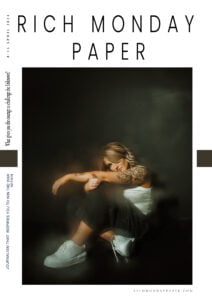Art Therapy & Self-Expression: The Impact of Art on The Brain

Art therapy has always been available to each one of us as an unique form of self-expression impacting the brain in a positive way, an approach to mental health and well-being that combines creativity, self-expression and psychological healing. In our increasingly fast-paced and demanding world, maintaining mental health and cognitive function is more important than ever. One avenue for achieving this is through the transformative power of art. In this article we explore the deep connections between music, dance and painting, leading to a greater sense of mental wellbeing and art’s positive impact on the brain.
Table of Contents
Living with art and self: a canvas of creative self-expression
If you look around, there is a radiant sun over the horizon, casting its golden light upon the canvas of life, illuminating the infinite possibilities that lie within the realm of artistic self-expression. As we embark on our creative journeys, we may ask ourselves: are we the ones choosing the art form to express our creativity, or is the art choosing us? The answer, like the essence of art itself, is beautifully complex and deeply personal.
The song you hear when you listen to your heart is an inspiring waltz of art and self, an intimate and a continuous flow of exploration and discovery that leads us to the core of our being. Our creative inclinations are often an inherent part of our identity, waiting to be awakened and nurtured. The art forms we gravitate towards can be seen as reflections of our innermost desires, passions, and life experiences, guiding us towards channels of self-expression that resonate with our souls.
In the tapestry of existence, the threads of art and self are inextricably woven together. As we immerse ourselves in the act of creation, our authentic selves are revealed, and our true colors emerge in vibrant, vivid hues. The art form, in its wisdom, mirrors our essence back to us, allowing us to recognize and embrace our unique gifts and talents.
As we journey through life, our artistic interests may evolve, leading us to explore new forms of self-expression. This is not a sign of indecision or inconsistency, but rather an affirmation of our growth and personal transformation. The art forms that call to us at various stages of our lives serve as guides, inviting us to delve deeper into the wellspring of our creativity and expand our understanding of ourselves and the world around us.
When you listen to the whispers of your heart and heed the call of your creative passions, you open the door to a world of limitless potential. The art form that beckons you may reveal itself in a multitude of ways – a melody that resonates with your spirit, the graceful movements of a dancer, or the captivating brushstrokes of a painting. As you embrace the art form that speaks to you, you embark on a journey of self-discovery and personal growth, allowing our creativity to soar and our souls to shine.
The relationship between art and self is a symbiotic one, a harmonious interplay between expression and inspiration. As you create, you give life to your innermost thoughts, emotions, and dreams, and in return, the art form nourishes your spirit, fuelling your passion and igniting your imaginations. In this dance of creative self-expression, you find solace, inspiration, and a sense of purpose than nothing else can match.
Art therapy: a canvas for emotional expression and cognitive growth
The human brain is a complex and fascinating organ that plays a critical role in our ability to perceive, create, and appreciate art. We invite you to explore how the brain processes and engages with art, as well as the neurological benefits that arise from artistic experiences.
Painting is a powerful form of self-expression that allows individuals to explore and communicate their innermost thoughts and emotions. This creative outlet can lead to a heightened sense of self-awareness and personal growth, which is essential for maintaining mental health. Engaging in painting activities can also be therapeutic, as it enables individuals to release pent-up emotions, reduce stress, and enter a state of relaxation and mindfulness.
The process of painting engages various cognitive functions and can lead to numerous benefits in this domain. For instance, painting requires individuals to make decisions about colors, shapes, and composition, which stimulates critical thinking and problem-solving skills. Furthermore, the act of transforming abstract concepts into visual forms encourages the development of spatial intelligence and the ability to perceive relationships between objects.
As painters focus on the intricate details of their work, they cultivate sustained attention and concentration, which are valuable cognitive skills in everyday life. Additionally, painting can serve as a memory-enhancing activity, as the brain creates and recalls visual representations of the subject matter. This fosters the growth and strengthening of neural connections associated with memory and learning.
While each artistic discipline offers unique mental health and cognitive benefits, the combination of music, dance, and painting can have a synergistic effect, leading to even greater improvements in overall wellbeing. By engaging in a variety of artistic pursuits, individuals can experience a more comprehensive range of benefits, as each art form provides distinct pathways to emotional expression, mental health enhancement, and cognitive growth.
The power of art as a catalyst for mental health and cognitive function improvement is undeniable. Music, dance, and painting each provide a unique means of emotional expression and a plethora of cognitive benefits. By incorporating these artistic activities into our lives, we can foster mental wellbeing, enhance cognitive performance, and ultimately, enrich our existence. So, whether it’s through playing an instrument, dancing to your favourite tune, or painting a masterpiece, immerse yourself in the transformative world of art and experience the profound impact it can have on your mind and soul.

Music’s influence on your brain
Music, a language that transcends borders and cultural barriers, is an essential part of human existence. It has the incredible ability to evoke a wide range of emotions, making it a vital form of self-expression and emotional communication. When it comes to mental health, music plays a significant role in alleviating stress and anxiety, as listening to it stimulates the release of endorphins—the brain’s natural “feel-good” chemicals. This, in turn, helps to elevate mood by promoting the production of serotonin, a neurotransmitter associated with happiness and well-being.
Certain types of music, such as classical or instrumental, create a soothing auditory environment that enhances focus and concentration. This makes it an ideal accompaniment for cognitive tasks. Additionally, the calming effect of music can slow down the heart rate and lower blood pressure, leading to improved relaxation and sleep quality.
Beyond its mental health benefits, music also has a substantial influence on cognitive function. By engaging in musical activities like playing an instrument or singing, individuals can experience improved memory and learning abilities. Research has shown that musicians often exhibit superior memory and learning capabilities compared to non-musicians, indicating the potential for musical activities to strengthen these cognitive skills.
Musicians also tend to have more refined auditory processing abilities, which can lead to enhanced language skills, spatial reasoning, and pattern recognition. Lastly, musical training has been shown to increase neural plasticity, or the brain’s capacity to adapt and reorganize itself in response to new experiences.
Dance with your brain- science backed facts
Dance, as an expression of both physical movement and creativity, offers a wealth of mental health benefits. The process of mastering new dance moves and performing in front of others fosters a sense of accomplishment and self-confidence, leading to boosted self-esteem. Dance also serves as a gateway to social interaction and support by providing opportunities for engagement and forming connections with others. This can alleviate feelings of isolation and loneliness, which are often detrimental to mental health.
In addition, dance acts as a physical outlet for emotions, allowing individuals to release tension and reduce stress levels. The very act of dancing triggers the release of endorphins, which help elevate mood and promote feelings of happiness.
Dance is not just about physical movement; it also engages the mind, resulting in numerous cognitive benefits. By requiring the brain to coordinate complex movements and memorize choreography, dance challenges and strengthens cognitive processes such as attention, memory, and problem-solving. Moreover, dance has been linked to enhanced neuroplasticity, which enables the brain to create new neural connections and adapt to new challenges.
Art engages various regions of the brain, activating both the cognitive and emotional systems. When we view a piece of art, the brain processes the visual information and makes connections to stored knowledge, emotions, and personal experiences. Some key areas involved in art perception include:
The Visual Cortex: The visual cortex, located at the back of the brain, is responsible for processing visual information. When we observe a piece of art, the visual cortex decodes elements such as color, shape, and texture.
The Prefrontal Cortex: The prefrontal cortex is involved in decision-making, attention, and emotional processing. As we view art, this area helps us evaluate the artwork, form judgments, and connect the visual experience to our emotions and memories.
The Amygdala: The amygdala plays a central role in processing emotions. When we experience an emotional response to art, the amygdala becomes activated, allowing us to connect with the artwork on a deeper, more personal level.
The Fusiform Gyrus: The fusiform gyrus is involved in facial recognition and processing of human forms. When we view art that depicts people or faces, this area helps us interpret and understand the human elements within the artwork.
Art production and the brain creative powers
Creativity is at the core of art therapy, as it encourages individuals to express themselves without the constraints of language. This opens the door for a deeper understanding of one’s thoughts and feelings, leading to increased emotional resilience and personal growth.
Creating art also has a profound impact on the brain. The process of making art engages multiple brain regions and fosters cognitive and emotional growth. The cerebral cortex is the outermost layer of the brain and plays a crucial role in creativity. It is responsible for higher-order functions, such as decision-making, planning, and abstract thinking, which are all essential components of the artistic process
Art Therapy: a matter of self-expression
Art therapy is a form of psychotherapy that uses visual art as a means of communication and self-expression. By engaging in the creative process, individuals can explore their emotions, improve self-awareness, and develop healthy coping strategies.
Emotional healing and self-expression: Art therapy allows individuals to explore and express difficult emotions in a safe and non-threatening environment. By externalizing emotions through art, one can gain a deeper understanding of their emotional state and develop healthier coping mechanisms.
The act of creating art can serve as a calming and meditative process, helping to alleviate stress and promote relaxation. Engaging in art therapy has been shown to lower cortisol levels, which can contribute to improved overall well-being.
Improved Self-Esteem and Confidence: Creating art can lead to a sense of accomplishment and pride, bolstering self-esteem and confidence. As individuals learn to express themselves creatively, they often find a newfound sense of self-worth and empowerment.
Enhanced Cognitive Functioning: Art therapy can help improve cognitive functioning by stimulating the brain and fostering problem-solving skills. As individuals engage in the creative process, they develop new neural connections, which can enhance cognitive flexibility and adaptability.
Are you choosing an art form to self-express your creativity or is art choosing you?
Art therapy can incorporate a variety of techniques and modalities, depending on the individual’s needs and preferences. Some common approaches include:
Painting and Drawing: Painting and drawing are popular methods in art therapy, as they allow for a wide range of self-expression and exploration. These activities can be used to work through emotional challenges and facilitate personal growth.
Sculpture and 3D Art: Sculpture and other 3D art forms can help individuals explore their feelings and emotions in a tangible way. By working with various materials, individuals can gain a deeper understanding of their inner world and develop new coping strategies.
Collage and Mixed Media: Collage and mixed media techniques enable individuals to combine various materials, images, and textures to create a unique visual representation of their thoughts and emotions. This approach can be particularly beneficial for those who struggle with verbal communication.
Digital Art: Digital art therapy utilizes technology to facilitate self-expression and creativity. By using computer software, individuals can create digital paintings, drawings, or even animations to communicate their emotions and experiences.
Art therapy offers a powerful and transformative approach to mental health and personal growth by harnessing the power of creativity and self-expression. Its numerous benefits include emotional healing, stress reduction, improved self-esteem, and enhanced cognitive functioning. By utilizing various art techniques and modalities, individuals can explore their emotions and experiences in a safe and supportive environment, leading to increased self-awareness and personal transformation. Under the guidance of a qualified art therapist, art therapy can serve as a valuable tool for achieving emotional well-being and unlocking one’s creative potential.
So, as you ponder the question of whether you choose art or art form chooses you, remember that the beauty of creativity lies in its fluidity and boundless potential. Embrace the art as it leads you to your Inner Self. Allow the whispers of your heart to guide you on your unique and inspiring journey of artistic self-expression.
Do you want to share your story and inspire our readers ? Know that every story is paving the way for a brighter, happier future.




